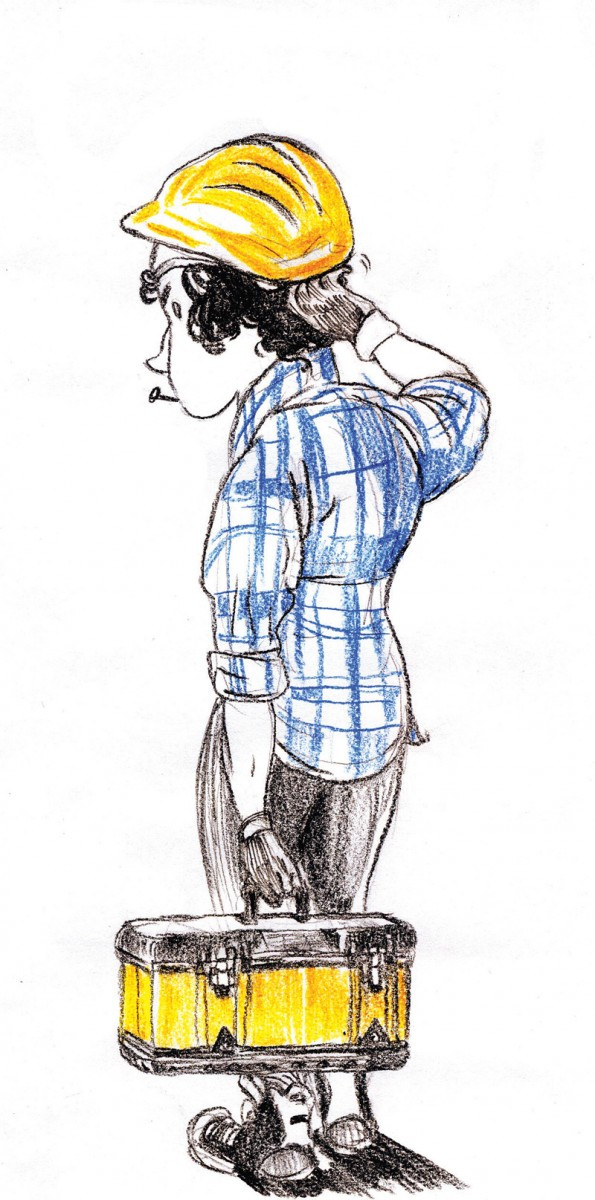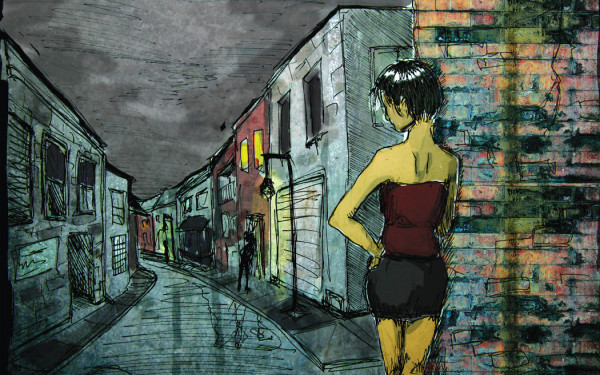A Lot of Work to Do
Why Are the Skilled Trades Closed Off to Women?
It seems that as far as in-demand jobs go, it’s a man’s world. On employment sites, opportunities abound in traditionally masculine domains like auto mechanics, electrical work and plumbing.
According to the federal government, the “skills gap”—a generalized lack of specialized labour—is particularly severe in the skilled trades, a sector in which women are grossly underrepresented.
Although good jobs are available, women don’t seem to be accessing them. Nearly half the labour force is now female, but the world of skilled trades remains decidedly male. According to the 2011 National Household Survey, men outnumber women nearly 16 to one in the employment category of trades, transport and equipment operators and related occupations.
There are many theories to explain this disconnect, but for Jennifer Lys Grenier, who works with women in nontraditional jobs at the nonprofit Action travail des femmes, two particularly stand out: women aren’t generally encouraged by society to go into trades, and those who do face discrimination on the job market.
“A lot of the exclusions remain social and cultural,” she said. “There are a lot of boys’ clubs.”
According to Lys Grenier, persistent stereotypes make it harder for women to make a living in the trades than men.
“If an employer needs five workers and he’s given a list of 10 workers and there’s two women on the list, he’s going to take five men, even though the women might be more qualified,” she lamented.
Though some say that men dominate trades simply because they are stronger, this argument doesn’t hold up for Lys Grenier. Many women are stronger than men, she says, and advanced tools like hydraulic wire cutters have made trades such as electrical work less physically demanding, in addition to improving the long-term health of workers.
However, according to Lys Grenier, women still find that to succeed in the trades, they have to meet even higher standards than their male co-workers.
“Any worker has some latitude for learning, for mistake, for error. Women don’t have that,” she said. “You got your foot in the door, you have to suck it up, and you have to have a level of tolerance that is way higher than the norm.”
Women in male-dominated work environments face similar attitudes if they ask for special accommodations or complain about sexual harassment, she says.
Lys Grenier finds these barriers particularly disappointing given the potential payoff the trades could give to women and their families, as skilled trades jobs come with a decent paycheck and are often unionized.
“The reason why trades are so important is that women also comprise 70 per cent of workers that fill part-time and precarious jobs, [and] are poorer overall,” she said. “One of the reasons why is […] because of the types of jobs that they do.”
Having more female tradespeople, she said, “would have a huge impact on the economy as a whole.”
Cécile Demers, who works to integrate women into the skilled trades with the Women’s Centre of Montréal, thinks that women wanting to go into traditionally male trades simply don’t get enough support.
“Sometimes the people in the woman’s life won’t necessarily approve that choice,” she said. “There are still people around who think that some jobs are made for women and others for men.”
A public awareness campaign, she says, would help get women into the trades. She would also like to see primary and secondary schools teach girls about career possibilities in the skilled trades.
The Women’s Centre’s non-traditional employment programs serve just under 100 women a year, 75 per cent of whom go on to pursue a career in a traditionally male sector. But the centre receives funding on a year-to-year basis, and Demers says the programs could benefit from more resources to build links with employers. She sees getting women into skilled trades as a good investment.
“There are sectors where there are labour shortages,” she said. “It’s too bad, because […] the labour is there, it just doesn’t always have the training.”
The surest path to a job in many of the skilled trades is a technical diploma (a vocational studies diploma, or DEP, in Quebec) coupled with an apprenticeship: paid, supervised, on-the-job training with an experienced employer.
In Canada, women complete a mere 14 per cent of all registered apprenticeships. And in Quebec, only five per cent of apprentices are female.
Violette Goulet is among the few. A former Concordia jazz student, she chose to pursue a diploma in carpentry and is now a second-year apprentice working in the construction industry.
“There’s nothing traditional about me,” she laughed, explaining that she first tried her hand at carpentry as a teenager, when she helped build her mother’s house.
The fact that Goulet was the only woman in her class and one of the few in her program didn’t deter her.
“It wasn’t a barrier for me,” she said. “I knew I was in the right place.”
At school, Goulet says, she always finished her tasks before at least half of the rest of her class.
“So half of them were slower and didn’t perform as well as me,” she said. “The men were confronted with that, it made them realize that a girl can do what they can.”
Goulet’s experience in the male-dominated world of carpentry has been a positive one overall. She began working immediately after graduation and has even started a business with two partners she met in the field.
But she says her skills are not always automatically accepted in the same way as those of her male coworkers.
“What I find annoying is that you’re always having to prove yourself,” she said.
“The guys are curious,” she continued. “They always ask the same questions: ‘Why are you here? Why are you doing this?’”
Her answer?
“Because I like it, because I want to make money,” she said. “The same reasons as [them].”


_600_832_s.png)

ED1(WEB)_1_600_375_90_s_c1.jpg)
3_1_600_375_90_s_c1.jpg)

